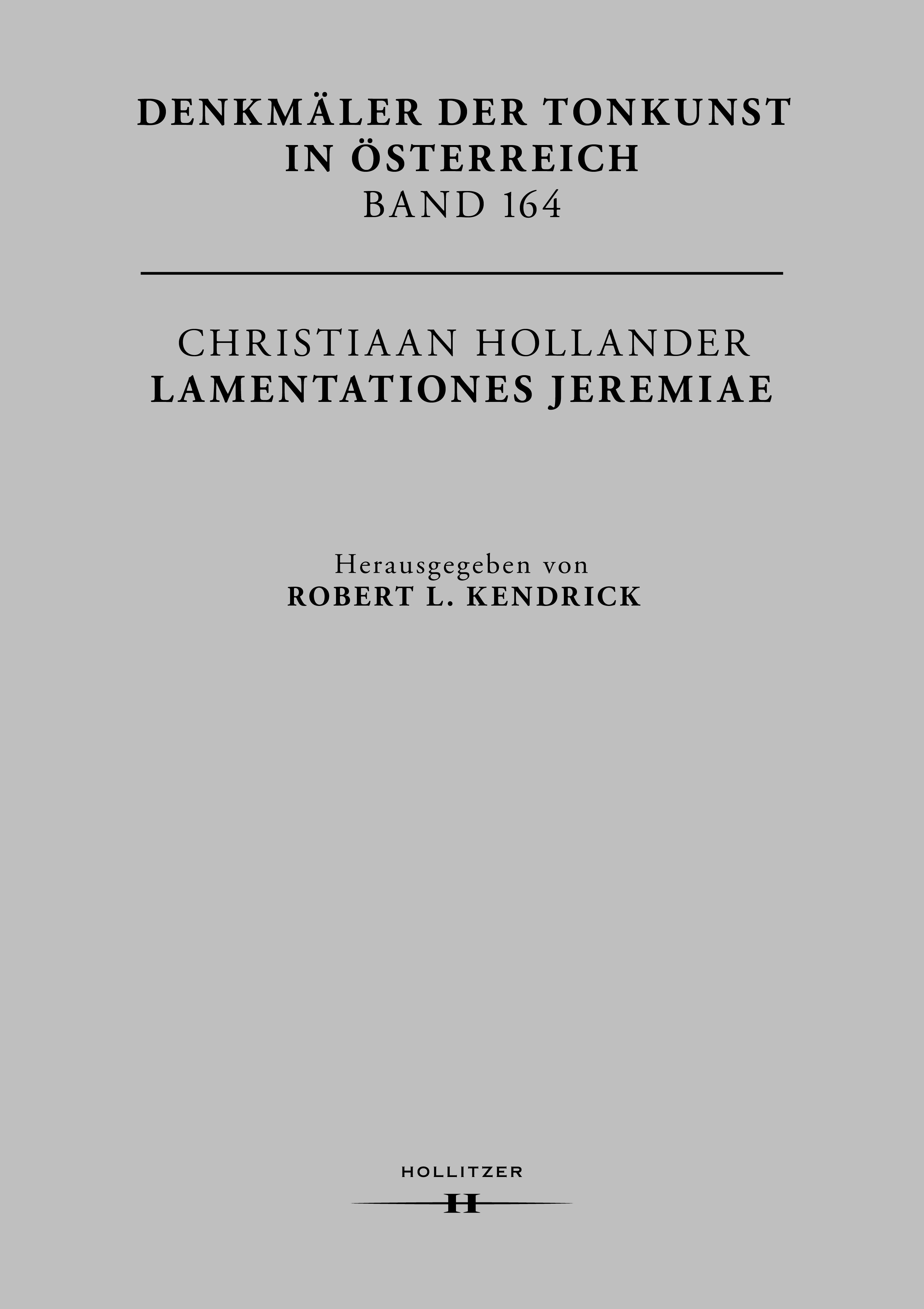
Robert L. Kendrick (Hg./ed.): Christiaan Hollander. Lamentationes Jeremiae, Reihenhrsg. Martin Eybl und Birgit Lodes, Wien: Hollitzer Verlag, 2022 (Denkmäler der Tonkunst in Österreich, Band 164), 84 S., 24 x 34 cm, English | Deutsch, Softcover
ISBN 978-3-99094-072-3 (pbk) € 120,00
ISBN 978-3-99094-073-0 (pdf) € 119,99
ISMN 979-0-50270-024-9
Christiaan Hollander
Lamentationes Jeremiae
Die neuen Lamentationen (Klagelieder des Jeremia) wurden in der römisch-katholischen Kirche traditionell als Lektionen im Triduum Sacrum der Karwoche gesungen. Christiaan Hollander (um 1510–1568/69) komponierte seinen fünfstimmigen Zyklus für die Liturgie am Hof Erzherzog Ferdinands II., entweder in Prag (1565–66) oder in Innsbruck (1566–1569). Das Werk liegt in der Österreichischen Nationalbibliothek als Handschrift aus dem Jahr 1579 vor, die mit einem Widmungsgedicht von Michael Echamer an Kaiser Rudolf II. beginnt. Echamer war ein Kollege von Hollander am Tiroler Hof und nahm die Kompositionen wahrscheinlich mit sich, als er 1569 nach Dresden übersiedelte und in sächsische Dienste trat. Die Textauswahl der neun Lektionen ist einzigartig und in dieser Form weder in anderen Lamentationen-Zyklen noch in zeitgenössischen Brevieren zu finden. Das dichte Satzgewebe der Komposition korrespondiert mit Hollanders zeitgenössischem Ruhm als Kontrapunktist.
Traditionally, verses from the Lamentations of Jeremiah were sung in Catholic liturgy as nine Matins Lessons during the Triduum Sacrum of Holy Week. Christiaan Hollander (c. 1510–1568/69) composed his five-voice cycle of such pieces for the chapel of Archduke Ferdinand II of Tyrol either in Prag (1565–66) or Innsbruck (1566–69). The only manuscript source of this work is preserved in the Austrian National Library: a codex from 1579 which opens with a dedicatory poem by Michael Echamer to Emperor Rudolph II. Echamer, Hollander's colleague at the Tyrolese court, probably took the pieces with him when he moved from Tyrol to Saxon court service in Dresden in 1569. The textual choices of the nine Lessons are unique, and not paralleled in other cycles nor contemporary breviaries. The complex texture of the pieces corresponds to Hollander's comtemporary fame regarding his contrapuntal skill.
Information about the series Denkmäler der Tonkunst in Österreich
CONTENTS
INTRODUCTION |
EINLEITUNG
ILLUSTRATIOINS |
ABBILDUNGEN
SOCRE |
PARTITUR
CRITICAL REPORT |
KRITISCHER BERICHT
APPENDICES |
ANHANG




